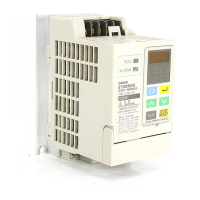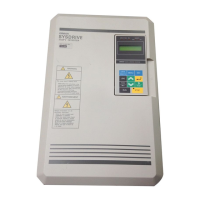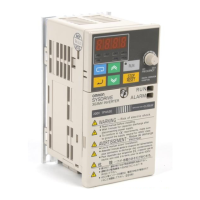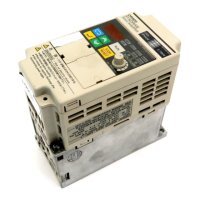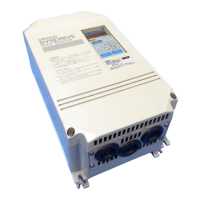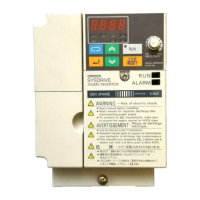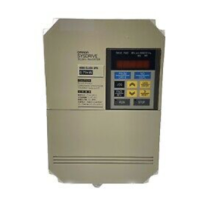5-2-8 Vertical-axis Load Drops when Brakes are
Applied
•Sequence is incorrect.
The Inverter remains in DC braking status (50% of the n31 setting) for 0.5 second after
deceleration is complete. Modify the sequence so that brakes are applied when the
Inverter enters DC braking status.
•Brakes are inappropriate.
Always use control brakes, not holding brakes.
5-2-9 Motor Burns
•The dielectric strength of the motor is insufficient.
Surge arises when the motor (inductive load) is connected to the output side of the
Inverter.Normally, the maximum surge voltageis approximatelythree timesthe power
voltage. Therefore, the dielectric strength of the motor to be used must be higher than
the maximum surge voltage.
5-2-10 Controller Receives Noise when Inverter is
Started
•Noise derives from Inverter switching.
Take the following actions to prevent noise:
Reduce the carrier frequency of the Inverter.
The number of internal switching times is reduced, so noise can be reduced to
some extent.
Improve the frame ground.
A current generated by internal switching normally leaks into the frame ground.
Therefore,connectthe ground terminal with a sufficientlythick and shortwire
of100
Ω
or less
.
Install an input noise filter.
Install an input noise filter (3G3IV-PHF) on the power input side of the Inverter.
Install an output noise filter.
Install an output noise filter (3G3IV-PLF) on the output side of the Inverter.
Provide a separate power supply for the sensor.
If the sensor malfunctions, provide a dedicated power supply for the sensor and
install a noise filter on the power supply. For the signal line, use a shielded cable.
Chapter 5
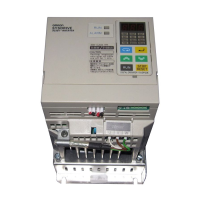
